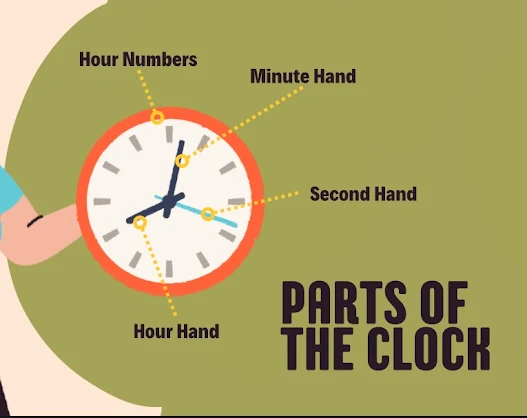Telling Time in Math By Educatorsharmin
Time is a precious resource that shapes almost every aspect of our lives. Understanding time is crucial for organisation, effective planning, and success. A critical life skill that aids in time management, meeting deadlines, and decision-making in children is the ability to tell time.
Telling time is important in math because it helps children develop a strong understanding of basic mathematical concepts like fractions, counting by fives, and the concept of division, particularly when using an analog clock, which visually represents these ideas through the hour and minute hands; it also helps with time management and daily planning, making it a practical life skill tied to mathematical reasoning.
Key points about telling time and math:
- Fractions:
Reading an analog clock naturally introduces fractions, as "half past" or "quarter to" represent parts of an hour.
- Counting by fives:
The clock face is divided into intervals of five minutes, which reinforces skip counting.
- Geometry and angles:
Understanding the positions of the clock hands involves basic geometric concepts like angles.
- Time calculations:
Being able to tell time allows children to perform simple addition and subtraction calculations related to time differences.
- Real-world application:
Knowing how to tell time is essential for managing daily routines and schedules, making it a valuable life skill.
1. Start with the Basics
Introduce the Clock: Show an analog clock and explain its parts—hour hand, minute hand, and numbers (1-12).
Differentiate Hands: Explain that the short hand is for hours and the long hand is for minutes.
2. Teach Hours First
Use a Clock with Movable Hands: Move the hour hand to different numbers and ask the child what hour it is.
Relate to Daily Activities: "We eat lunch at 12 o’clock."
3. Introduce Minutes in Increments
Teach Counting by 5s: Use a number line or clock with minute markers to help kids count in fives around the clock.
Practice Quarter and Half-Hours: Explain "half past" (30 minutes), "quarter past" (15 minutes), and "quarter to" (45 minutes).
4. Move to Digital Time
Show how digital clocks represent time and compare them with analog clocks.
5. Practice with Games & Activities
Clock Puzzles: Let them match times with daily routines.
Flashcards: Show a time and have them read it aloud.
Drawing Clocks: Ask them to draw the hands for given times.
Apps & Online Games: Use interactive tools to reinforce learning.
A clock has several key parts that help tell time.
Here are the main components:
1. Face (Dial)
- The main surface of the clock where numbers and hands are displayed.
2. Hands
- Hour Hand → The shorter hand that points to the hour.
- Minute Hand → The longer hand that points to the minutes.
- Second Hand (if present) → The thinnest hand that moves continuously to count seconds.
3. Numbers
- 1 to 12 on an analog clock (sometimes with additional minute markings).
- Digital clocks display numbers in 24-hour or 12-hour format with AM/PM indicators.
4. Tick Marks
- Small lines between numbers representing individual minutes and seconds.
5. Center (Pivot/Axis)
- The middle point where the hands are attached and rotate.
6. Frame (Case or Rim)
- The outer covering that holds the clock together.
7. Gears (Inside the Clock Mechanism)
- Found inside mechanical clocks; these help the hands move accurately.
8. Alarm (If Applicable)
- Some clocks have an alarm function that sounds at a set time.
Teaching AM and PM can be fun and engaging by relating it to real-life experiences.
Here’s a structured approach:
1. Explain the Concept of a 24-Hour Day
- Introduce the idea that a full day has 24 hours, split into two 12-hour periods:
- AM (Ante Meridiem) → Before midday (morning) 12:00 AM to 11:59 AM
- PM (Post Meridiem) → After midday (afternoon & night) 12:00 PM to 11:59 PM
2. Use a Daily Routine for Context
Morning (AM) Activities: Waking up, having breakfast, going to school/work.
- Afternoon & Evening (PM) Activities: Lunch, dinner, bedtime, night sky.
- Use questions like:
- "Is breakfast in the AM or PM?"
- "Do we go to bed at 8 AM or 8 PM?"
3. Show the Difference with an Analog and Digital Clock
- Display 12-hour clocks with AM and PM labels.
- Compare a 12-hour clock vs. a 24-hour clock (e.g., 3 PM = 15:00).
4. Interactive Activities for Practice
- Sorting Game: List activities and have kids place them under AM or PM.
- Daily Timeline: Draw a timeline and place activities at the correct times.
- Role-Playing: "Pretend it’s 7 PM. What are you doing?"
- Flashcards or Matching Games: Show a time and ask if it’s AM or PM.








Comments